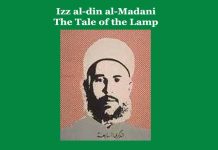Lakhminath Bezbaruah | Patmugi | An Analytical Study
Lakhminath Bezbaruah | Patmugi | An Analytical Study
Lakhminath Bezbaruah | Patmugi | An Analytical Study
‘Patmugi’ is an Assamese short story written by an Indian Assamese versatile writer called Lakhminath Bezbaruah (1868-19 ). Unequal marriage and suffering is the main theme of the story. The story is written in the first person. The story portrays how a woman suffers in a male-dominated society.
Patmugi was a girl of a lower class in society. Ceramics was their traditional occupation. She was the only child of her parents. She fell in love with a youth of the higher class of society. She lived in Dabaka Mauza and the boy with whom she was in love lived in Bakata Mauza. She was admonished by many of her society not to be married to a boy who belonged to the higher caste. But she was obstinate in her love affairs. On the other hand, the boy was also adamant to marry her. Subsequently, they were married and began to live peacefully as husband and wife in the house of Patmugi. A year passed by, and one day it was found that he had fled somewhere. Patmugi began to wail for her husband. Her mother took the bed for three days with the thought of her son-in-law. One day her cousin went to Bakata Mauza, the village to which the husband of Patmugi belonged. Going there he came to know that Patmugi’s husband, after being expiated, had married a beautiful girl of his caste. Knowing this Patmugi bewailed much and after the suggestion of some villagers, Patmugi decided to go to the law court to have justice. She set out for the capital with the company of her mother and her cousin. It was an April day. The sun was so hot. On the way to Rangpur, the capital city, they halted with a view to taking rest for some time as they were so tired and exhausted. On the roadside, there was an auo tree. Patmugi asked her cousin to climb up the tree in order to pluck some aou tenga (a kind of fruit) so as to quench their thirst. Accordingly, her cousin climbed up the tree and plucked three aou. In the meantime, when her cousin was getting down from the tree his eyes fell on Patmugi and he became enamoured of her beauty as if he had discovered her anew. Her eyes also fell on his eyes. Both were attracted to each other. Since then, Patmugi seemed to be light-hearted and cheerful. Her mother also noticed that the mood of her girl had suddenly changed. Then they went to the court and met a lawyer. They discuss the matter and told the lawyer what had happened to her and sued to get justice. They exhausted half the money they took with them. Suddenly Patmugi told the lawyer that she would not run the case against her husband. The lawyer asked her then why she had come to the court. She replied that she came to the court to know something which had already been known. Eventually, they returned home. After coming home her cousin being attracted to Patmugi felt ashamed of it and the sense of sin came to his mind hence he went to the Namghar and prayed to God to forgive him. After some day Patmugi came to her cousin and told her that she had hardened her heart and decided to devote her life to the service of her motherland.
Patmugi is the main character of the story. She is portrayed as both a type and an individual. She is type in her love with a youth superior to her caste. She shows that love is blind. Her cousin is a true Vaishnav as he repents as soon as he felt his weakness towards Patmugi and expiates himself.
The main tone of the story is tragic. Patmugi suffers a tragic life because of her unequal marriage to a boy of a higher caste.
In narrating the story the author has employed the Subjective Method. He makes his character, the cousin of Patmugi, his spokesman and narrates his story.
The Structure of the story may be called to be coherent as there are certain stages as- exposition, complication, climax and denouement. In the exposition, the anther has introduced his main character Patmugi and her cousin. In the complication, we see that she is married to the boy with whom she was in love. The climax reaches when Patmugi tells the lawyer that she is not willing to sue her husband. The denouement meets with the expiation of the cousin of Patmugi.
The Setting of the story is consistent with the events and situation. The author gives a good description of his main characters along with the environment of his event. The very opening stanza of the story serves as the consistent setting to the story.
The Dialogues employed in the story are very logical as he uses them sparingly.
The Philosophy of Life is also found in the story. The author has expressed his philosophy of life indirectly that in a male-dominated society a woman often becomes the victim of a man’s desire.
The Language of the story is simple and easy to comprehend.
In maintaining the Qualities of a good short story as —unity of purpose, brevity, spontaneity, and universality the author has failed lamentably.
The story fails to be a story of any grade because the author fails to employ the fundamental elements of a short story as a genre of independent prose literature. 0 0 0.
Lakhminath Bezbaruah | Patmugi | An Analytical Study
N. B. This article entitled ‘Lakhminath Bezbaruah | Patmugi | An Analytical Study’ originally belongs to the book ‘World Short Story Criticism‘ by Menonim Menonimus. Lakhminath Bezbaruah | Patmugi | An Analytical Study
Books of Literary Criticism by M. Menonimus:
- World Short Story Criticism
- World Poetry Criticism
- World Drama Criticism
- World Novel Criticism
- World Essay Criticism
- Indian English Poetry Criticism
- Indian English Poets and Poetry Chief Features
- Emily Dickinson’s Poetry-A Thematic Study
- Walt Whitman’s Poetry-A Thematic Study
- Critical Essays on English Poetry
- Tawfiq al-Hakim’s Novel: Return of the Spirit-An Analytical Study
- Tawfiq al-Hakim’s Novel: ‘Yawmiyyat Naib Fil Arayaf’-An Analytical Study
- Analytical Studies of Some Arabic Short Stories
- A Brief History of Arabic Literature: Pre-Islamic Period …
Books on Linguistics by M. Menonimus:
- A Brief History of the English Language
- Essays on Linguistics
- My Imageries
- Felicitous Expression: Some Examples
- Learners’ English Dictionary
Related Searches:
- Short Stroy Criticism
- The Indian English Short Story
- Individual and Society …
- ‘Deliverance’ by Premchand Analysis
- Summary of Rabindranath Tagore’s ‘The Exercise Book
- Exercise Book
- The Cabuliwallah
- Atulananda Goswami Biogrpahy
- Lord Halifax’s Ghost Books
- The Romance of a Busy Broker
- The Last Lesson by Alphonse Daudet
- Story Summary’The Last Lesson’
- The Cloak
- The Overcoat by N Gogol
- Patmugi by Lakhminath Bezbaruah
- Biography of Lakhminath Bezbaruah …











